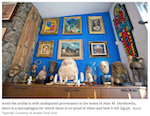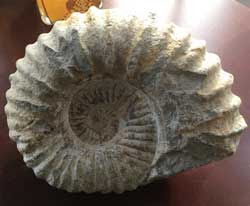Business Growth Newsletter #213 - Conclusions, Strengths at work, Cephalopods

GREG'S BUSINESS GROWTH NEWSLETTER #213
Quick notes to help you grow your business in less time with less effort. . . sometime next week.
In this issue:
- Techniques for FIT
- Being Human
- Random Stuff
Techniques for FIT
- There's some wiring in our brains which makes shortcuts irresistible. e.g. 10 minute abs. 4 hour workweeks. #1 draft choices. Psilocybin cure-alls. Greg's bookshelf.
- There is other wiring in our heads which turns everything into bimodal distributions. Black and white. Right and wrong. Us or them. All or nothing. Don't believe me? Ask random people who grew up in the 80's about Kate Bush.
- How big is your company's internal database? The amount of revenue I find by profiling a firm's best customers then applying that criteria to their internal database is always a positive return on the time, effort, and money invested.
- Every person you bump into next week is consuming content matching and reinforcing their worldview. It's always been a mistake to assume you know what's in someone's head, but nowadays it's a delusion. Ask more questions.
Being Human - How/What + VIA ------------------------------------------------------------
"And though she be but little, she is fierce." – W. Shakespeare

The I in the concept of F.I.T. is Individual Strengths. (It's truer to say the I stands for "self-identified individual strengths" but FS-IIST doesn't spell anything, so you get I.) The practice of using Individual Strengths starts with getting your people to use a tool like the VIA Survey of Character Strengths to self-identify their strengths. This tool has the user rank 24 character strengths against one another, and we ask them to share the top 5 with their manager.
The manager is cautioned against making judgments about what these self-identified strengths mean. Their first job is simply to get confirmation that the survey taker/team member thinks the results are accurate. If the manager doesn't hear, "Yes, I think it's right," or "It's pretty accurate," or a similar sentiment the tool won't work for the purpose I'm about to describe. The manager needs to get their team member to verbalize the results are accurate. (it's extremely rare for them to disagree – after all, they're the ones who took the survey!)
Once the manager has verbal agreement, they have a powerful tool at their disposal which will lead to team members exhibiting higher job satisfaction, increased productivity, and a greater chance of recruiting new employees to the firm.
Here are some ways your managers can use the tool:
- During training, ask the employee how they might use their strengths to complete the tasks being described.
- When it comes time to troubleshoot sub-par results, ask the employee to brainstorm what they need to do to utilize their strengths to improve.
- At the time employees are recognized for a job well done, have your manager find evidence of the employee's strengths at work, pointing out how the manager thinks it helped generate such great results.
It sounds simple, because it is. We like using our strengths. Your firm has the flexibility for employees to flex their strengths while achieving the outcomes you need. Let their self-identified individual strengths work for you.
Good stuff.
Random stuff
“Know your worth. Never settle for less than you deserve.” –Anon.

(via the NYTimes)
Watching or reading the news these days is like walking through a minefield. I tiptoe around most of the headlines appealing to my baser instincts but occasionally one will creep through and send me into a deep dive. This time it's Alan Derschowitz. As you probably know, he's acting as one of President Trump's impeachment attorneys and has his share of admirers and detractors. What you might not know is he is quite the art collector. The story I find myself knee-deep in is about A.D. selling off parts of his collection only to find out some of it is fake.
It happened in 2012 and the NY Times wrote an article about A.D. (among others) who find themselves holding objects they can't donate to museums because the objects have big gaps in, or are missing, provenance. It has to do with looting and stolen artifacts or something like that. Some of these items were purchased for many thousands of dollars and can't be donated to museums or sold by reputable auction houses without proper documentation.
It seems A.D. and others are miffed about this and you know what? I know how they feel. Both the collectors and the museums. My life is full of ancient things, mysteriously acquired, with unknown provenance, and questionable value. Like this:

It's wonderful to contemplate and I'm sure it's worth many times more than we paid for it. However, I wouldn't be shocked to hear it was made mixing water, Quickcrete, free time, chisels, and Gus.
If you need to set up a time to visit, follow this link:
https://calendly.com/chamberspivot/





